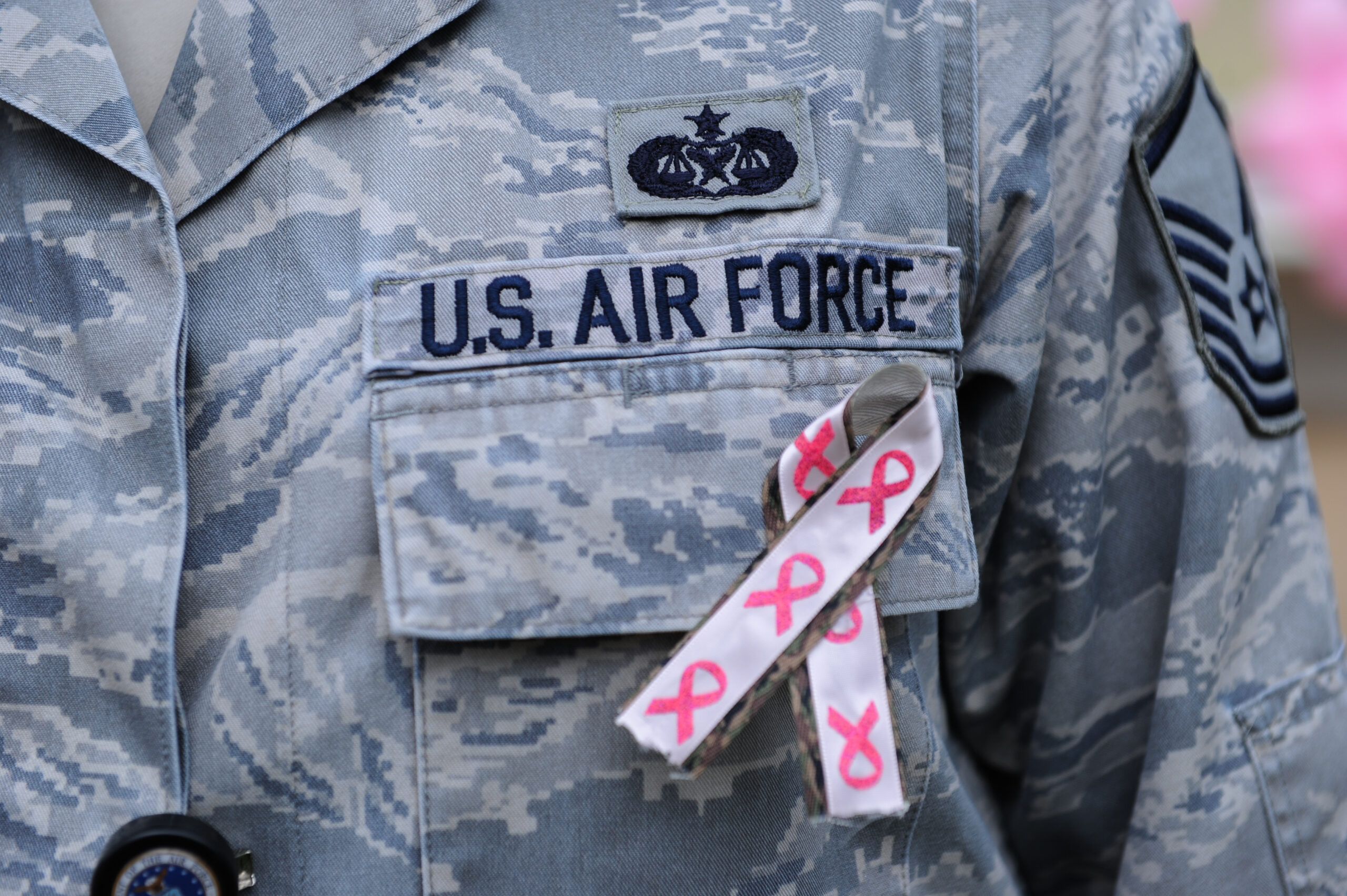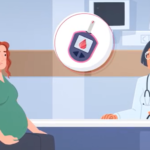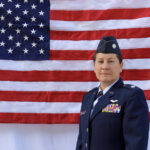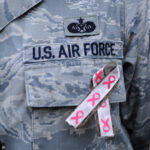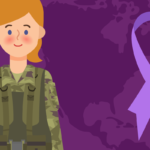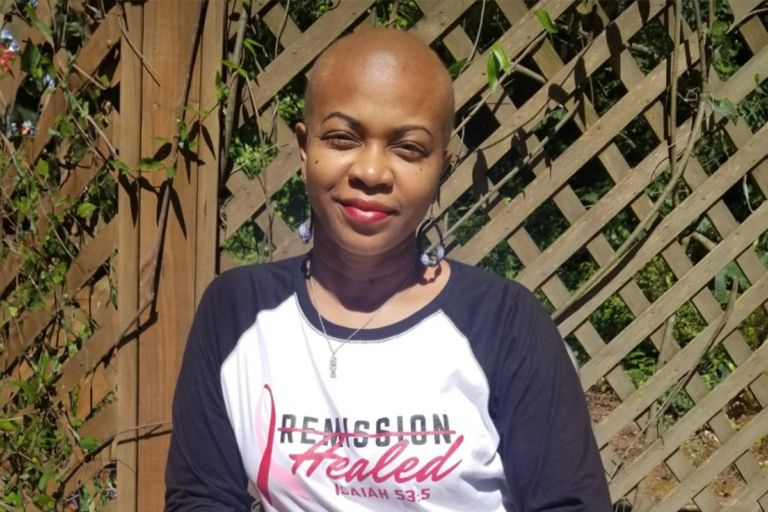Air Force Capt. Oksana Reed made an appointment with her primary care manager to deal with sinus headaches in October 2021. However, before the visit, she noticed a lump in her breast, which she mentioned during the appointment.
Despite sharing a family history of breast cancer and a desire for a BRCA genetic testing — which is a DNA test that can indicate an increased risk of breast and ovarian cancers — the healthcare provider she spoke with said it was normal to have breast lumps and bumps.
Because she was only 24 years old, there wasn’t a protocol in place for general breast examinations, and the Air Force provider suggested Reed could bring the issue up during her next well-woman exam.
Reed, who felt she was unable to skip work hours for various doctors appointments, couldn’t get in to see a women’s health specialist until April, roughly six months after her primary care visit. In that time, the lump doubled in size and became painful.
The well-woman exam yielded the suggestion of a probable cyst, but an official diagnosis couldn’t be made without a mammogram.
Again, because of her young age, her care options were limited. First, she needed a referral, and then she found that the military medical centers that could perform breast imaging were typically reserved for patients over 40. As a result, Reed, who was stationed in Washington, D.C., had to make an appointment at Walter Reed Medical Center in Bethesda, Maryland. Its first opening was in June.
There, a radiologist performed a mammogram and told her he was 99% sure it was cancer. She was in shock.
Upon biopsy, Reed was ultimately diagnosed with invasive ductal carcinoma, which was labeled as stage 2B. It has since been reclassified as stage 4 breast cancer, which is incurable. The diagnosis affected her career, and the progression of the disease now means Reed will be discharged from the Air Force at age 27.
Increased breast cancer risk for members of the military
Unfortunately, for women veterans and service members, breast cancer is all too common a diagnosis.
In fact, breast cancer among younger military women has been found to be 20% to 40% higher than the general population. And, in one study, nearly three times as many women veterans were at an increased risk for breast cancer when compared with historical averages in U.S. women.
The risk was even higher for Black servicewomen in the study, 30% of whom were at high risk compared to 12% in civilian Black women.
Possible reasons for the increased rate of breast cancer among active-duty servicewomen and veterans run the gamut from high-stress careers to toxic exposure in the line of duty. But the truth is, there isn’t a definitive answer.
In Reed’s case, genetics may have played a role. However, for those who either don’t have a family history or simply don’t know their history, the best line of defense is prevention.
But that can prove difficult, unfortunately. Tricare, the military’s health insurance provider, only covers annual mammograms for screenings for women if they are 40 or older (or 30 and older for those proven to be high risk). Other cases require approval or referrals, and it can be a lengthy waiting process to sort that out, like it was for Reed.
Research, prevention and the development of treatment options are ongoing within the Veterans Health Administration (VHA).
Prevention and screening for breast cancer among military women
Julia Terhune, M.D., a surgical oncologist with the VA Maryland Health Care System, said that breast self-awareness is encouraged.
“Having some awareness of how a woman’s breast feels and how that changes during their cycle is potentially beneficial, but really all that we have that has shown any real clinical benefit is screening mammography and clinical breast exam with the provider,” she said.
For those 40 and above, screening is vital.
“What it comes down to is a screening mammogram for asymptomatic patients 40 or older, and then it is recommended to have a clinical breast exam,” Terhune said.
It’s also worth noting that, for women veterans who served at a post or during a time known to have been host to toxic chemicals or burn pits, the Department of Veterans Affairs has included breast cancer detection and treatment as part of its burn pit registry.
Eligibility for breast cancer risk assessments and mammograms were added as part of the Dr. Kate Hendricks Thomas SERVICE Act. A Marine Corps veteran who was exposed to burn pits in Iraq in 2005, Thomas was diagnosed with stage 4 breast cancer in 2019 and died in 2022, at the age of 42.
Still, toxic exposure doesn’t account for all women service members — and that remains something of a shortcoming in military health policy.
The VA does provide treatment options. But each case is unique. According to Terhune, early stage cancers are more likely to have treatment with surgery plus or minus radiation and sometimes chemotherapy. But more advanced stage cancer is more likely to use systemic therapy options like chemotherapy and more selective use of surgery and radiation.
What each patient needs may be found at different medical facilities than the one nearest a servicewoman’s current station or a woman veteran’s local VA facility. If you find yourself needing a treatment that’s not easily accessible to you, you can talk to your command leadership and medical team about PCSing somewhere closer to a particular medical facility. Another option is to look into getting approval or a referral to see a closer civilian provider.
To prevent cases like Reed’s, the system could stand to change. Breast cancer treatment isn’t one-size-fits-all. Prevention shouldn’t be either.
The appearance of U.S. Department of Defense (DoD) visual information does not imply or constitute DoD endorsement.
This educational resource was created with support from AstraZeneca.


